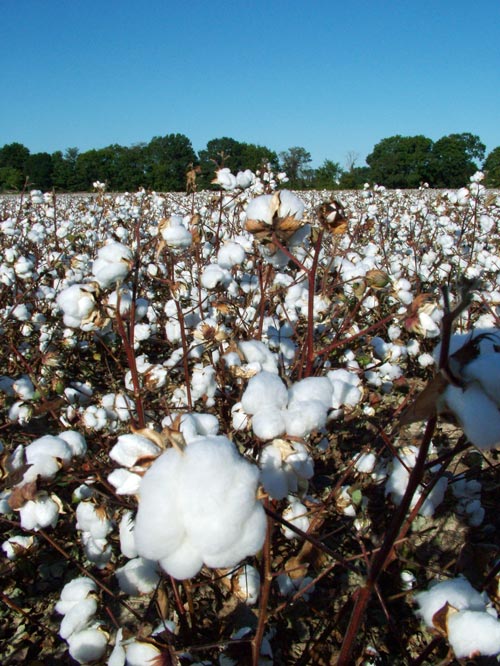
Dollar-plus cotton has put that crop “back in the game” for a lot of growers, says Darrin Dodds.
“Most growers are motivated by economics — and with the prospect of continuing high prices, cotton is $50 ahead of soybeans and corn when you put the pencil to it,” he said at the Delta Ag Expo at Cleveland, Miss.
Dodds, who is assistant Extension professor of plant and soil sciences at Mississippi State University, says $1.03, the price at which December cotton closed Tuesday, Jan. 18, trumps $13.26 soybeans and $5.78 corn.
That’s based on a 1,200 pound yield for cotton, 60 bushels for soybeans, and 190 bushel corn, and costs of $650 per acre for cotton, $300 for soybeans, and $550 per acre for corn.
Those costs can vary, depending on weed and insect pressures, he says, but the averages show cotton with a $50 advantage over the other two crops.
Newfound enthusiasm for cotton
Last year’s near record yield average (second only to 2004) of 980 pounds and blowing past the long-dreamed-of $1 price has generated newfound enthusiasm for cotton, Dodds says.
“Averages for my yield trials in the Delta were 1,258 pounds and in the hills 911 pounds. I expect the final state average will be just under 1,000 pounds.”
It was an excellent performance in a season that saw a broad range of growing conditions, he says.
“We had the best start for a crop in 10 years, then an extremely hot and dry June-September, followed by great harvest weather. June had 39 days worth of heat units compressed into 30 days.
“You’ve always heard it normally takes 60 days for cotton to bloom; last year, we were seeing blooms in 50 days.”
With renewed interest in cotton this year, Dodds cautions growers to choose varieties based on yield potential and performance on their soil types — and not necessarily on the technology package.
Seed choice is critical
“Your maximum yield potential is determined the day you put seed in the ground,” he says. “Choose a variety for its maximum yield potential for your particular situation. Utilize as much variety trial data as possible and spread your risk by planting three or four different varieties across a range of maturities.
“There are some excellent varieties available, so spend some time in choosing those that best fit your situation and your yield intentions.”
Glyphosate resistant pigweed has created more interest in LibertyLink cotton, Dodds says, and Bayer has stepped up its offerings in that system, including the launch of the first LibertyLink Stoneville variety this year — a “very early” variety that is expected to be available in limited quantities.
With increasing concerns about water conservation in agriculture, he says everyone, including those in research and Extension “are going to have to get better at managing water for irrigating crops.”
Irrigation assistance tool
Among the tools available, Dodds notes, is the Phaucet computer program for furrow irrigation systems using flexible polypipe.
“It’s somewhat time consuming to set up and enter data, but reports from Arkansas indicate water savings in the 25 percent range. That’s significant, not to mention reduced energy costs for pumping water.
The program will determine the diameter of holes to punch in a given section of pipe, calculate pressure changes along the pipe, adjust hole sizes for different row lengths in the same irrigation set, evaluable different layout options for a field and the irrigation pipe, and provide more uniform watering of a field in a shorter time period.
Use of the Phaucet program is one the acceptable measures for new well permit requirements in the state of Mississippi.
About the Author(s)
You May Also Like




